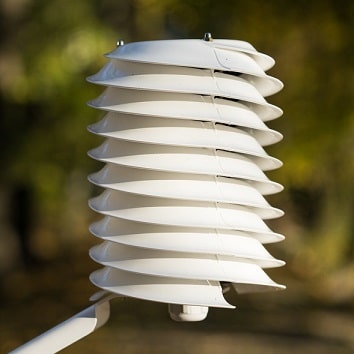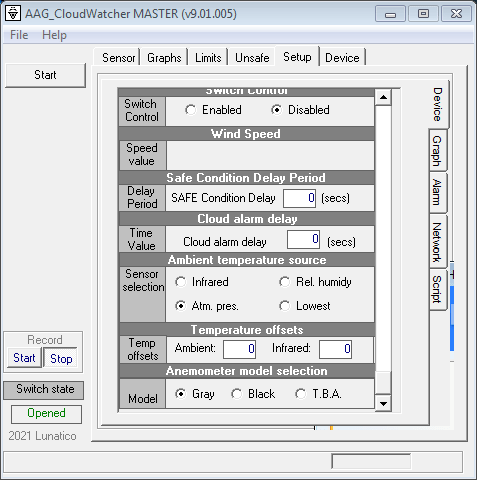Ambient temperature readings and
the CloudWatcher
What we usually understand with ambient temperature is the temperature in the shade – that’s the temperature the standard weather stations try to report.
To accomplish this (with good results), it is typically used some kind of dedicated enclosure such as this one:

For cloud detection, however, we don’t need an exact ambient temperature but something that follows that temperature, so the original CloudWatcher units used the IR sensor’s internal thermometer to report the ambient temperature. The result was always some degrees above «real» ambient temperature, but that was good enough for our purposes.
Adding the relative humidity sensor (external version), now improved with the atmospheric pressure sensor, both of which also include a temperature one, has allowed us to read a better ambient temperature measurement, as this sensor is placed below the unit, thus protected from sunlight, and in a separate, ventilated enclosure, with an aluminum heatsink and other improvements to increase the temperature accuracy.
The result is not as good as with a big, dedicated enclosure as the one in the image – but much more small and convenient, and quite accurate.
In the software, there are now several options to select both the source of the ambient temperature and an optional offset.
Bear in mind the final ambient temperature (from whatever sensor, and with any offset applied) will be used to adjust both the relative humidity and the atmospheric pressure, so it is worth selecting one of the sensors, and if needed setting a small offset. We recommend selecting the «Lowest value», but have left every other option available just in case.


